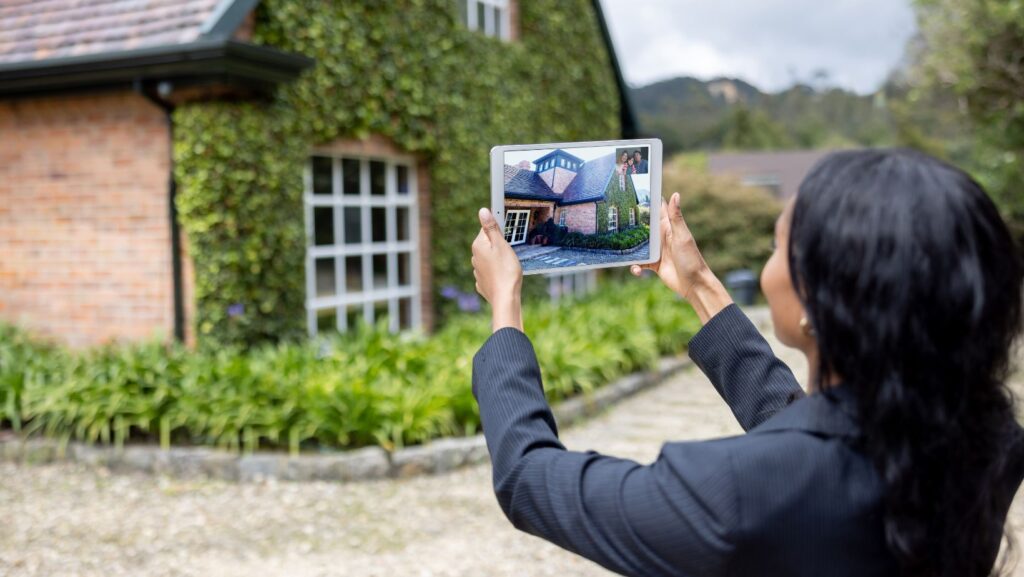In the ever-evolving landscape of the real estate industry, staying ahead of technological trends is essential for maintaining a competitive edge. One such trend that has revolutionized the way properties are showcased and sold is the use of interactive virtual tours. These digital tools provide potential buyers with an immersive, 3D experience of a property, allowing them to explore homes from the comfort of their own living rooms. This article delves into what interactive virtual tours are, their benefits, and practical tips for integrating them into your real estate business.
What Are Interactive Virtual Tours?
Tours are digital simulations of real-world environments that users can navigate and explore interactively. These tours often incorporate 360-degree photography, video, audio, and other multimedia elements to create a comprehensive and immersive experience. Unlike traditional static photos or videos, tours allow users to control their viewing experience, moving through a property at their own pace and exploring areas of interest in detail.
The technology behind virtual tours often involves the use of 3D cameras and software that stitches together images to create a seamless, navigable space. This results in a 3D virtual tour that can be accessed on various devices, including computers, tablets, and smartphones, making it highly accessible to potential buyers.
Benefits of Interactive Virtual Tours in Real Estate
- Enhanced Buyer Experience: virtual tours provide a more engaging and realistic experience compared to traditional photos and videos. Buyers can get a true sense of the property’s layout, size, and features, which can help them make more informed decisions.
- Increased Reach: By offering virtual tours, real estate agents can reach a broader audience. Prospective buyers from different geographic locations can explore properties without the need for physical travel, expanding the market beyond local boundaries.
- Time Efficiency: Virtual tours save time for both buyers and agents. Buyers can narrow down their choices by virtually visiting multiple properties before deciding which ones to see in person. Agents can also focus their efforts on more serious buyers who have already expressed interest based on the virtual tour.
- Competitive Edge: Incorporating interactive virtual tours can set a real estate business apart from competitors. This technology demonstrates a commitment to innovation and enhances the overall professionalism of the service offered.
- Better Property Showcase: Properties can be showcased in their best light, regardless of weather conditions or time of day. Virtual tours can highlight the unique features of a property, such as a beautifully designed kitchen or a spacious backyard, in a way that static images cannot.
Tips for Integrating Interactive Virtual Tours into Your Real Estate Business
- Invest in Quality Equipment: To create high-quality virtual tours, invest in a good 3D camera and related equipment. The clarity and resolution of the images are crucial for providing a realistic and engaging experience. Popular options include the Matterport 3D camera, which is widely used in the industry.
- Professional Photography: If you’re not confident in your photography skills, consider hiring a professional photographer who specializes in 3D virtual tours. They can ensure that the lighting, angles, and overall presentation of the property are optimized for the best virtual experience.
- Use Reliable Software: Choose a reliable software platform for creating and hosting your virtual tours. Platforms like Matterport, iStaging, and Zillow 3D Home offer user-friendly interfaces and a range of features to enhance your virtual tours. Ensure the software you choose is compatible with various devices and easy for users to navigate.
- Highlight Key Features: When creating your virtual tour, make sure to highlight the property’s key features. Use tags or hotspots to draw attention to unique elements like a newly renovated kitchen, a spacious master bedroom, or stunning views. This can help guide potential buyers and emphasize the property’s selling points.
- Incorporate Interactive Elements: Enhance the user experience by incorporating interactive elements into your virtual tours. This can include adding informational tags, voiceovers, or video clips that provide additional details about the property. Interactive floor plans that allow users to click on different rooms to explore them further can also be very effective.

- Promote Your Virtual Tours: Once your virtual tour is ready, promote it across various channels. Share the tour on your real estate website, social media platforms, and property listing sites. Use email marketing to send the tour link to your contact list, and consider running online ads to reach a wider audience.
- Provide Easy Access: Make it easy for potential buyers to access your virtual tours. Include clear calls-to-action on your website and listings, directing users to the virtual tour. Ensure the tours are mobile-friendly, as many users will view them on their smartphones.
- Collect Feedback: Gather feedback from users who have viewed your virtual tours to understand what they liked and what could be improved. Use this information to refine your future tours and enhance the overall user experience.
- Offer Virtual Open Houses: In addition to static virtual tours, consider offering live virtual open houses. These can be conducted via video conferencing platforms, allowing potential buyers to join a live walkthrough of the property and ask questions in real time. This adds a personal touch and can help build a connection with buyers.
- Keep Tours Up to Date: Ensure your virtual tours are always up-to-date with the latest information about the property. If there are any changes, such as renovations or new features, update the tour to reflect these. Keeping your virtual tours current ensures that potential buyers receive accurate information.
Case Studies: Successful Use of Interactive Virtual Tours
To illustrate the impact of interactive virtual tours, let’s look at a few real-world examples:
- Luxury Real Estate: A luxury real estate agency in Los Angeles incorporated Matterport 3D virtual tours into their listings. They found that properties with virtual tours received 40% more views than those without. The immersive experience allowed potential buyers to appreciate the high-end finishes and intricate details of luxury homes, leading to quicker sales and higher closing prices.
- Commercial Real Estate: A commercial real estate firm used virtual tours to showcase office spaces during the COVID-19 pandemic. With travel restrictions in place, potential tenants from different states and countries could explore available spaces virtually. This approach not only maintained interest but also led to several leases being signed without in-person visits.
- Rental Market: A property management company managing a portfolio of rental properties introduced virtual tours to streamline the rental process. Prospective tenants could explore apartments online, reducing the number of physical viewings needed. This efficiency helped the company lease properties faster and reduced the workload for their leasing agents.
Future Trends in Virtual Tours
As technology continues to advance, the future of VR tours in real estate looks promising. Here are some trends to watch:
- Virtual Reality (VR): Virtual reality is poised to take interactive tours to the next level. With VR headsets, potential buyers can experience properties as if they were physically present. This immersive experience can create a deeper emotional connection to the property.
- Augmented Reality (AR): Augmented reality can enhance virtual tours by overlaying digital information in the real world. For example, users could see furniture placement suggestions or home improvement ideas while exploring a property virtually.
- AI and Personalization: Artificial intelligence can be used to personalize virtual tours based on user preferences. By analyzing user behavior and feedback, AI can suggest properties that match the buyer’s criteria and highlight features that are most likely to appeal to them.
- Interactive Neighborhood Tours: Future virtual tours might not be limited to the property itself but could include interactive tours of the surrounding neighborhood. This could provide potential buyers with a comprehensive view of the local amenities, schools, parks, and other points of interest.
Conclusion
Tours are a powerful tool for modernizing your real estate business and providing an enhanced experience for potential buyers. By investing in quality equipment, utilizing professional photography, choosing reliable software, and incorporating interactive elements, you can create compelling 3D virtual tours that set your listings apart.

Promoting these tours effectively and keeping them up-to-date ensures maximum reach and engagement. As technology evolves, staying abreast of new trends like VR, AR, and AI will keep your business at the forefront of the industry. Additionally, securing the right rental property loans can help investors and property managers fund technology upgrades that enhance their listings. Embrace the future of real estate with interactive virtual tours and watch your business grow.
